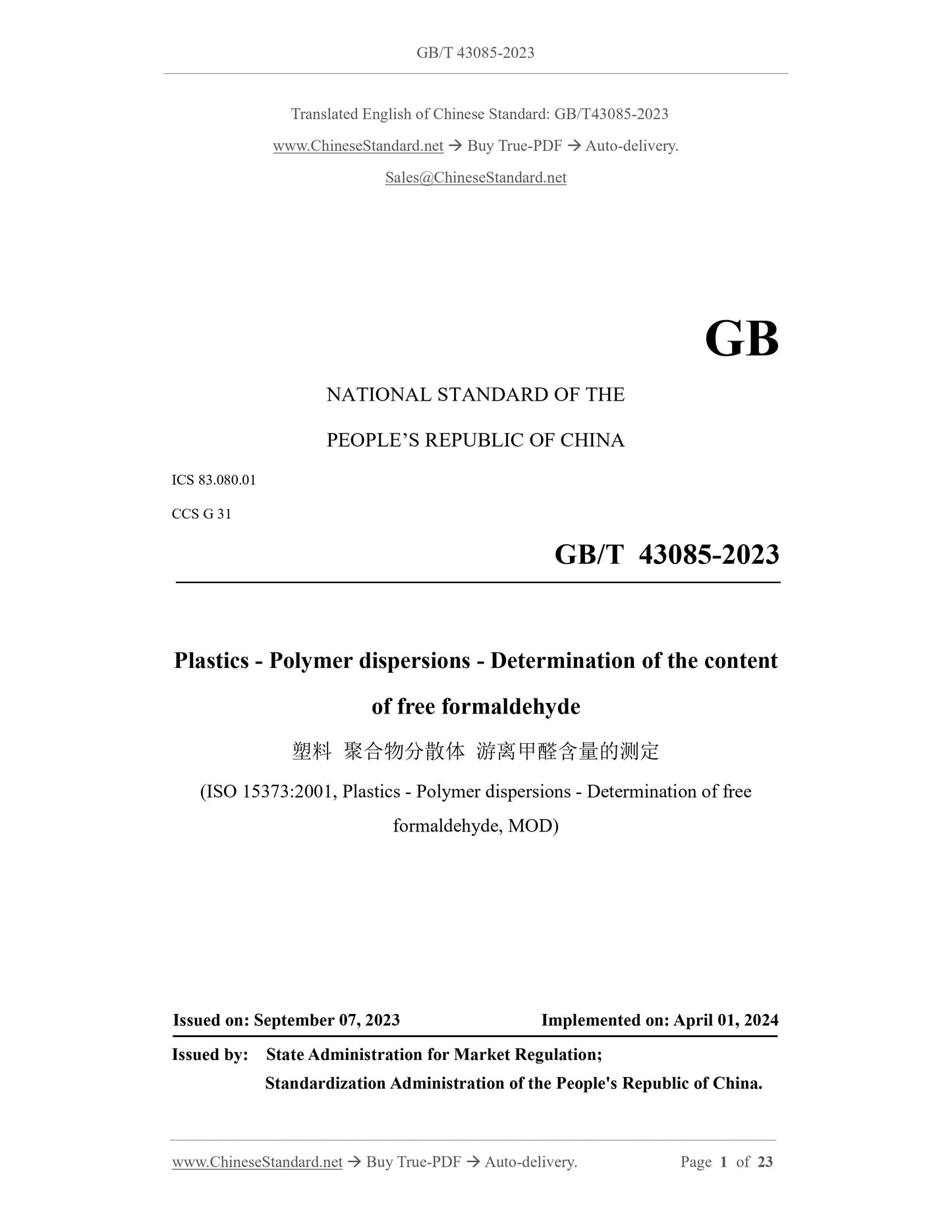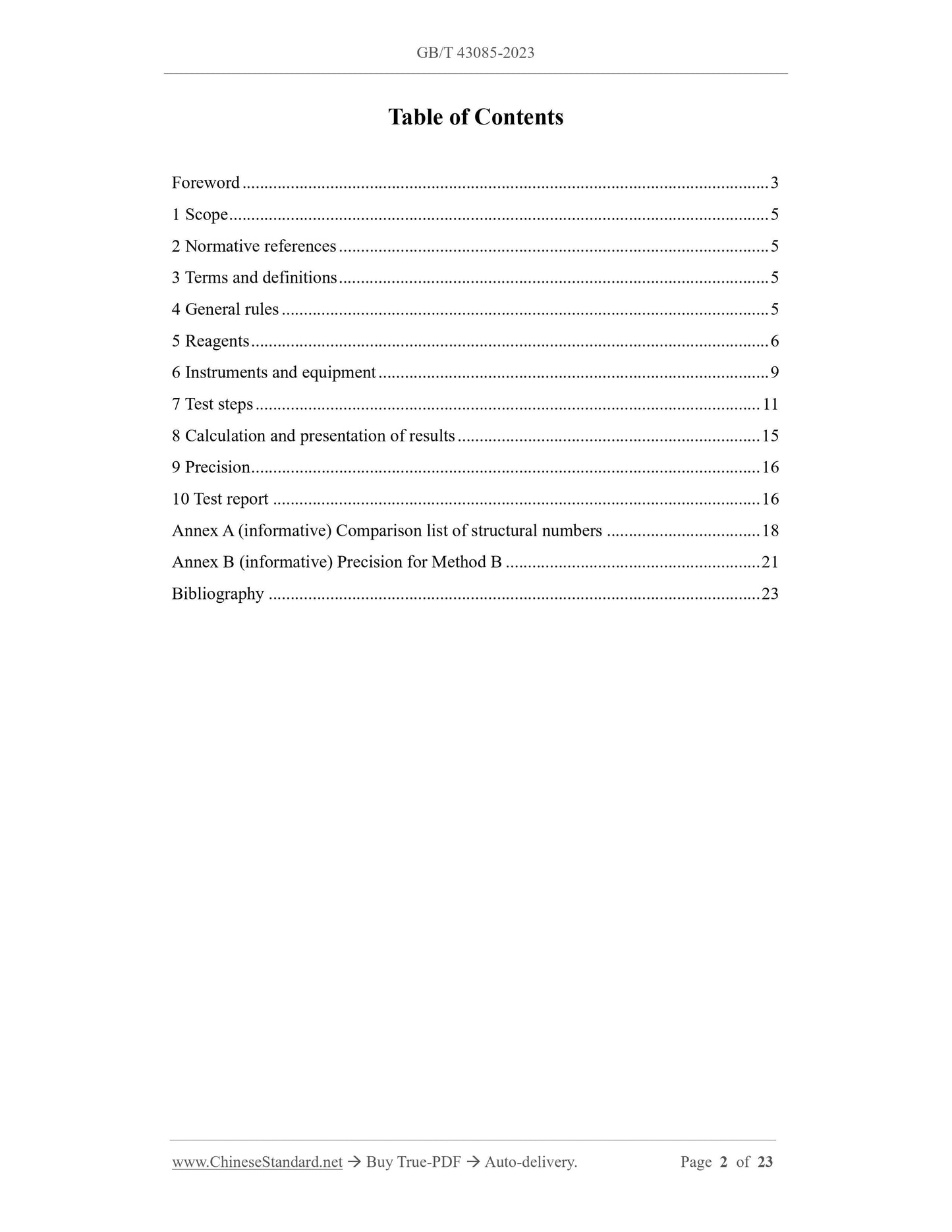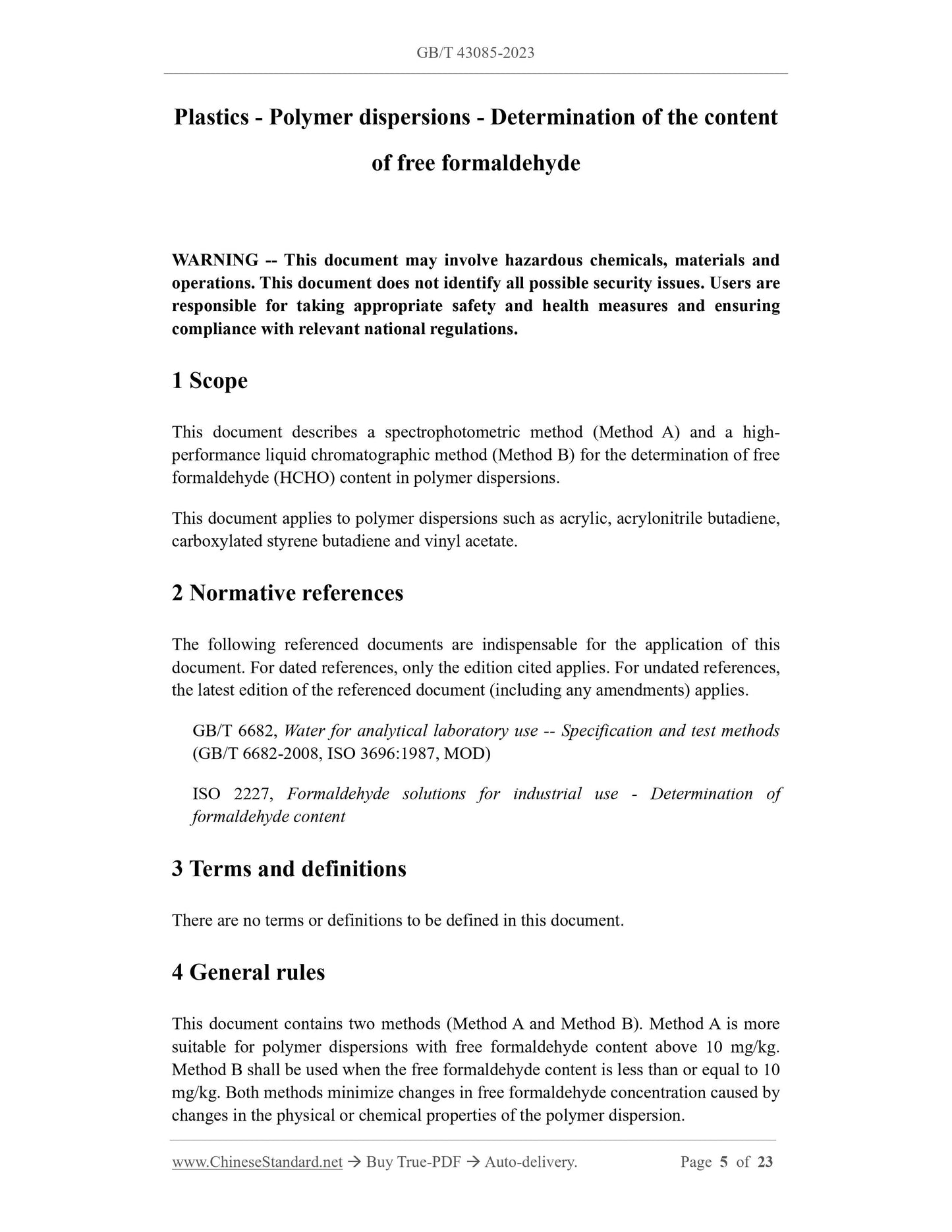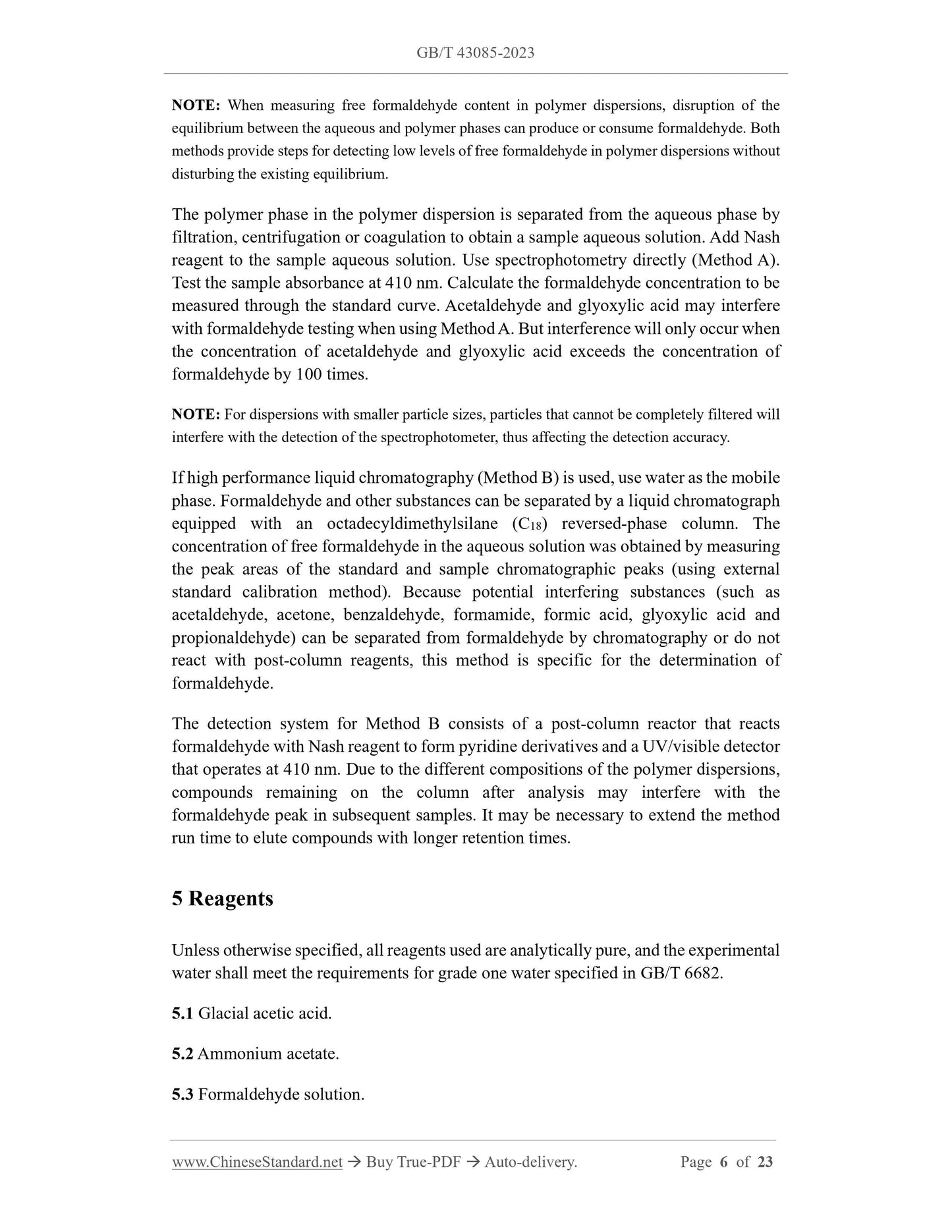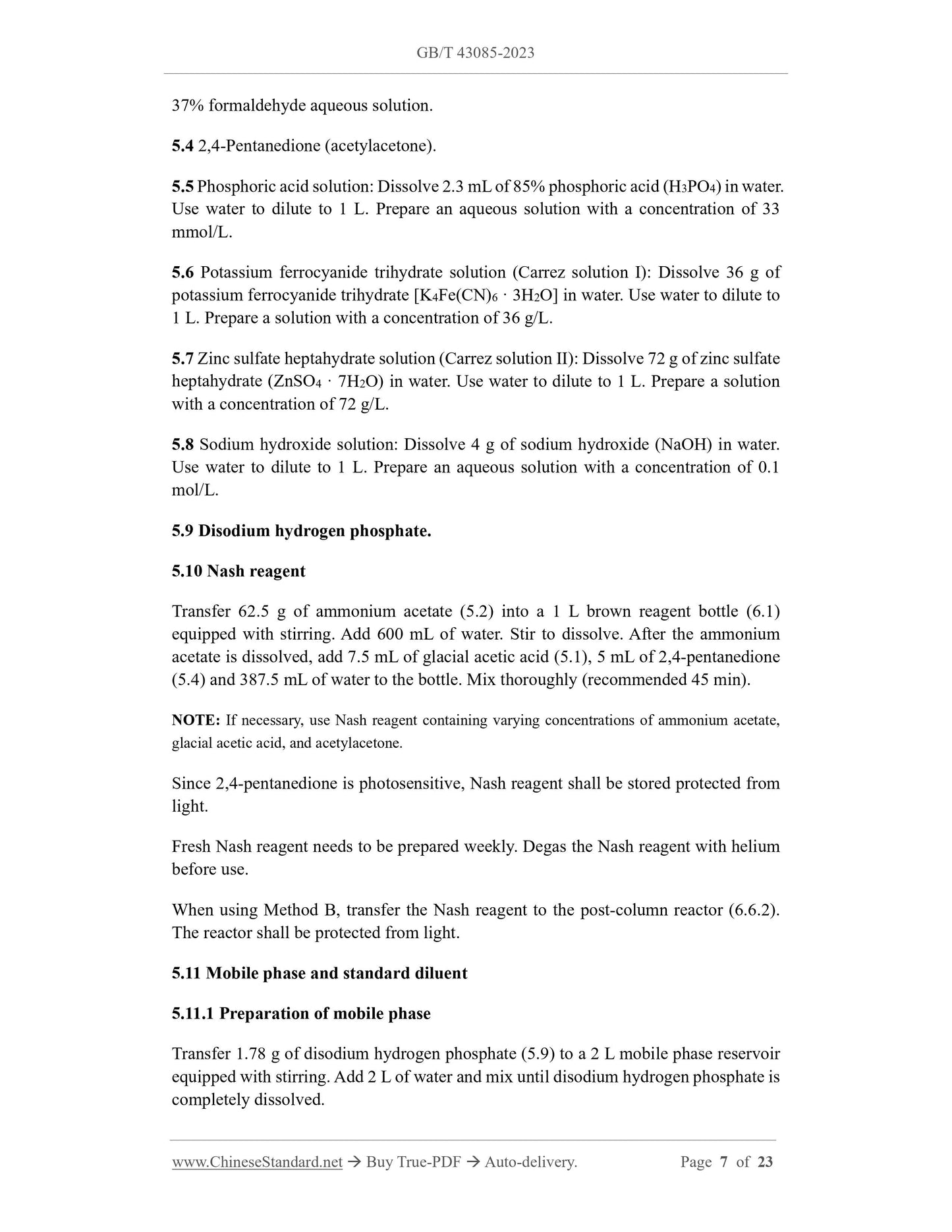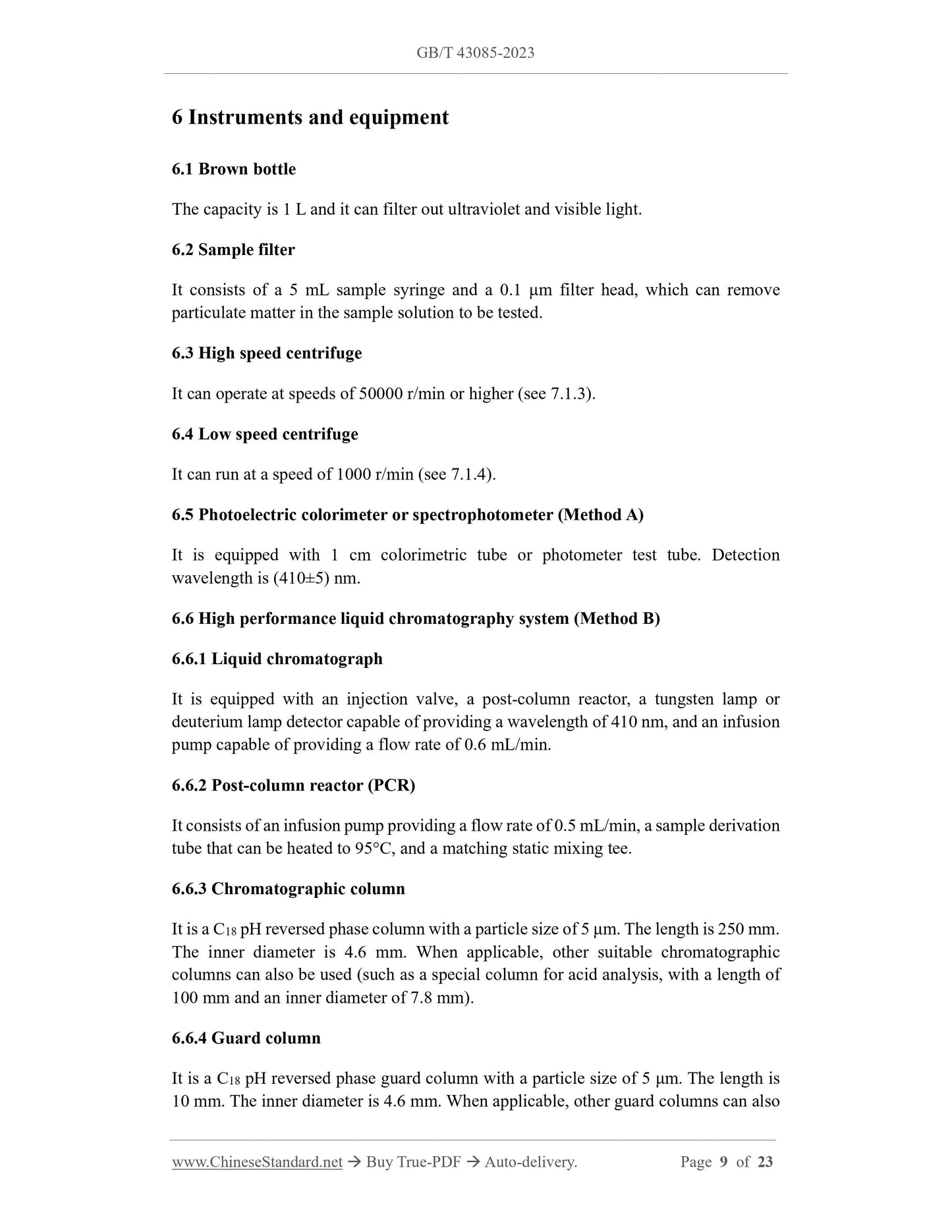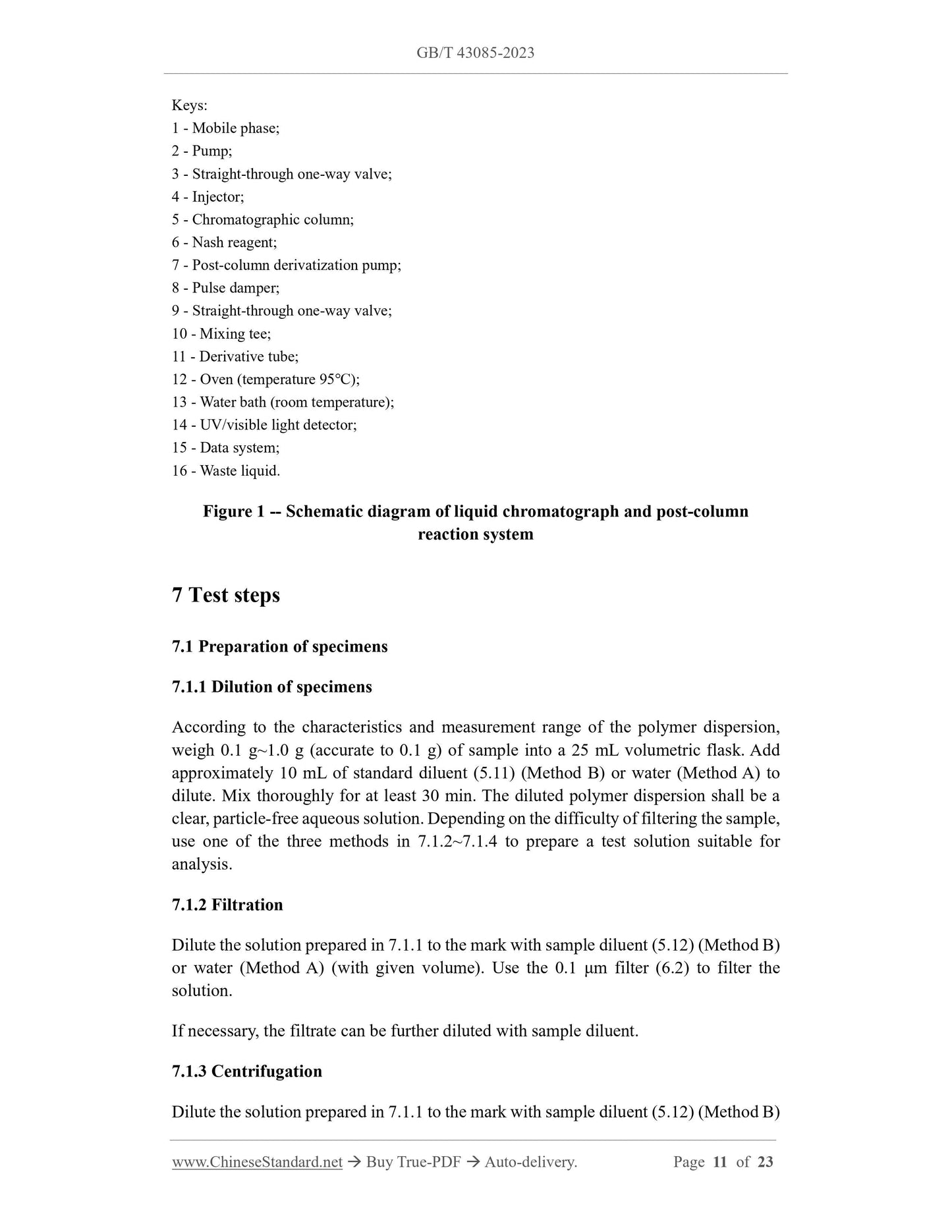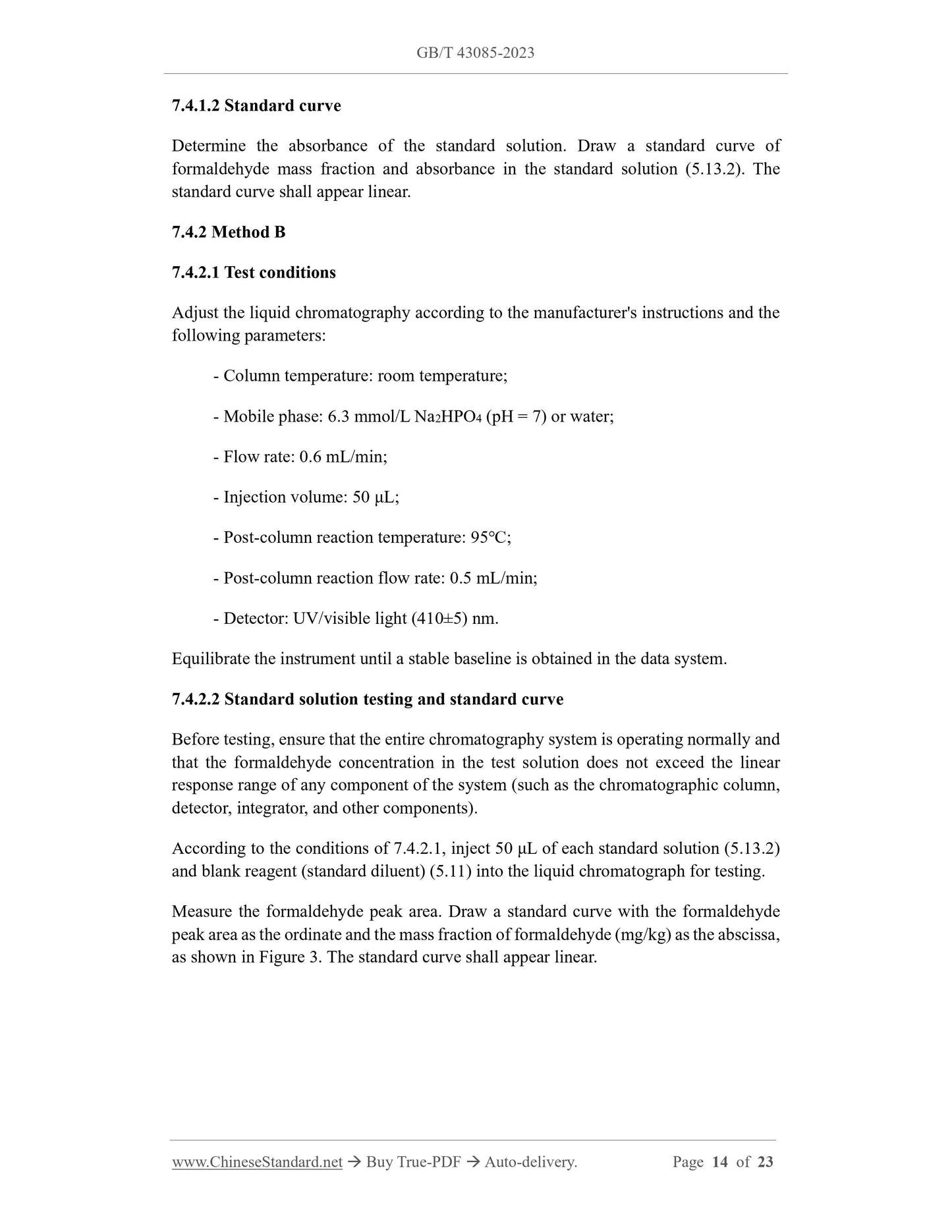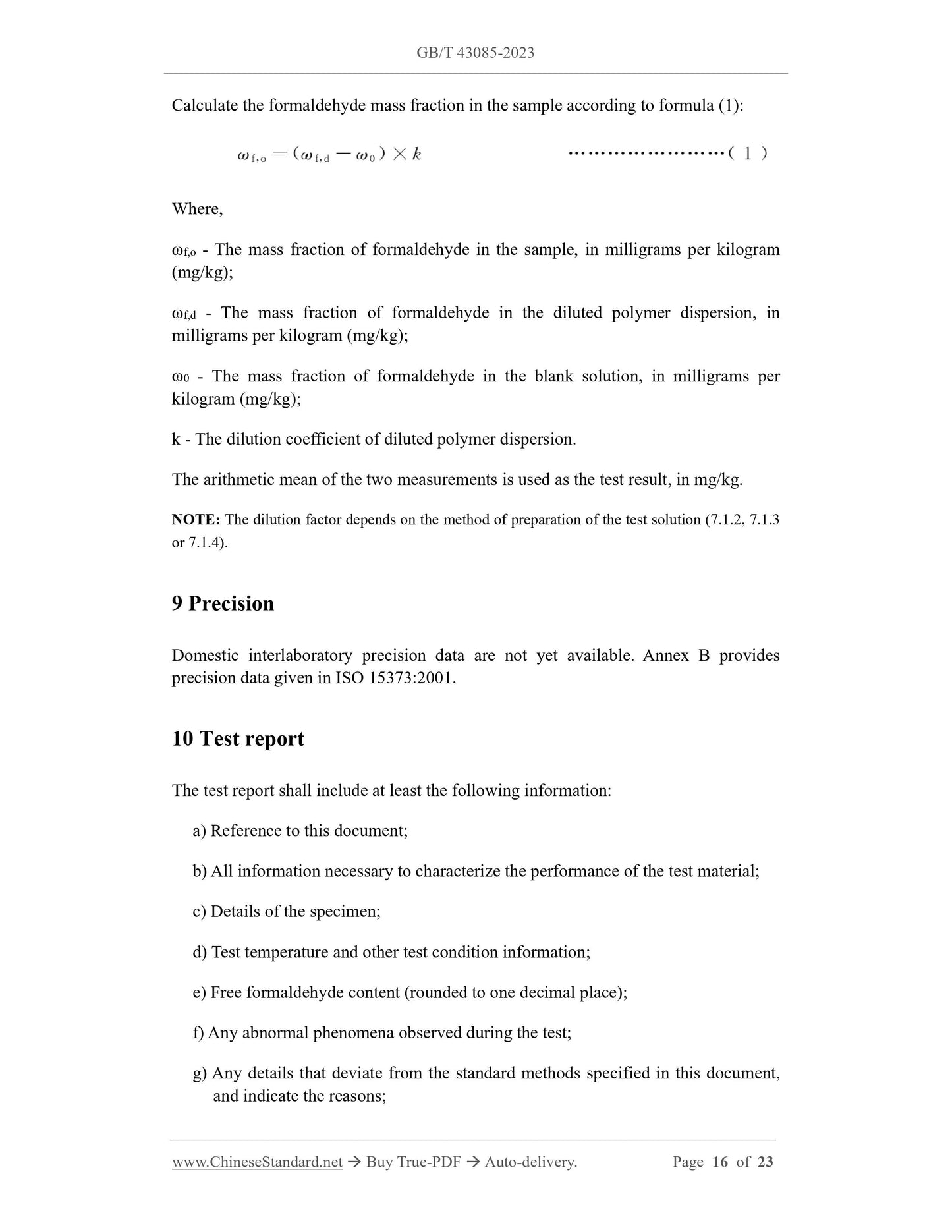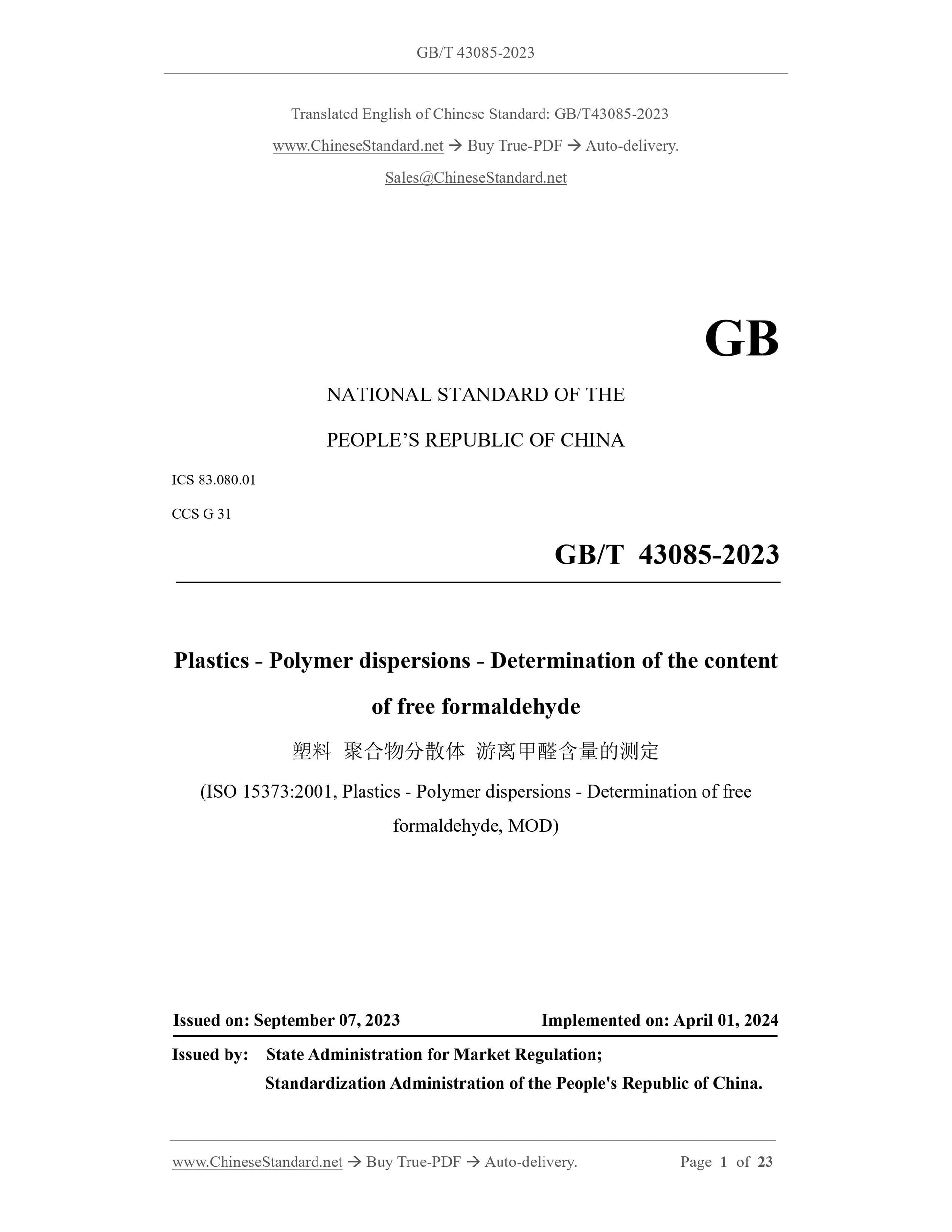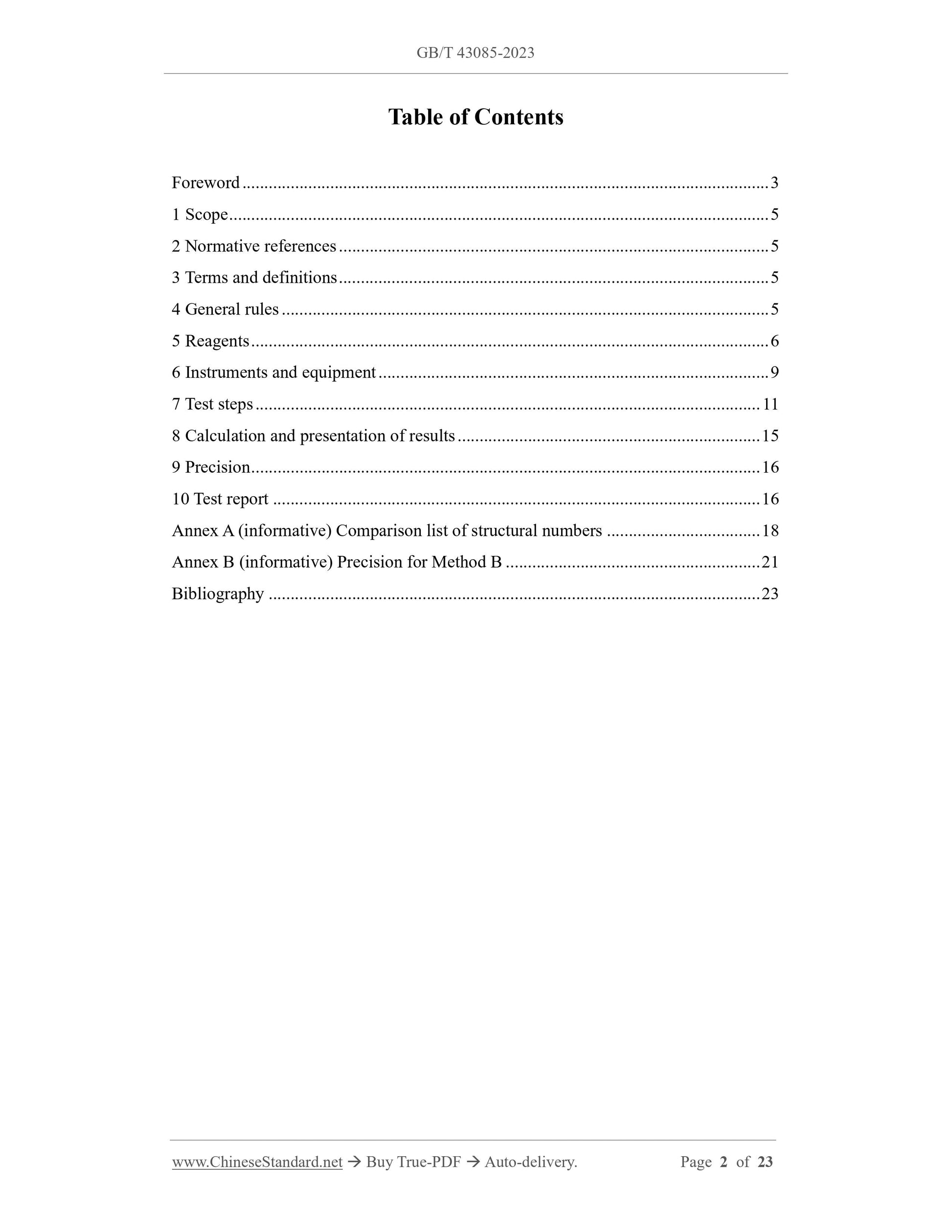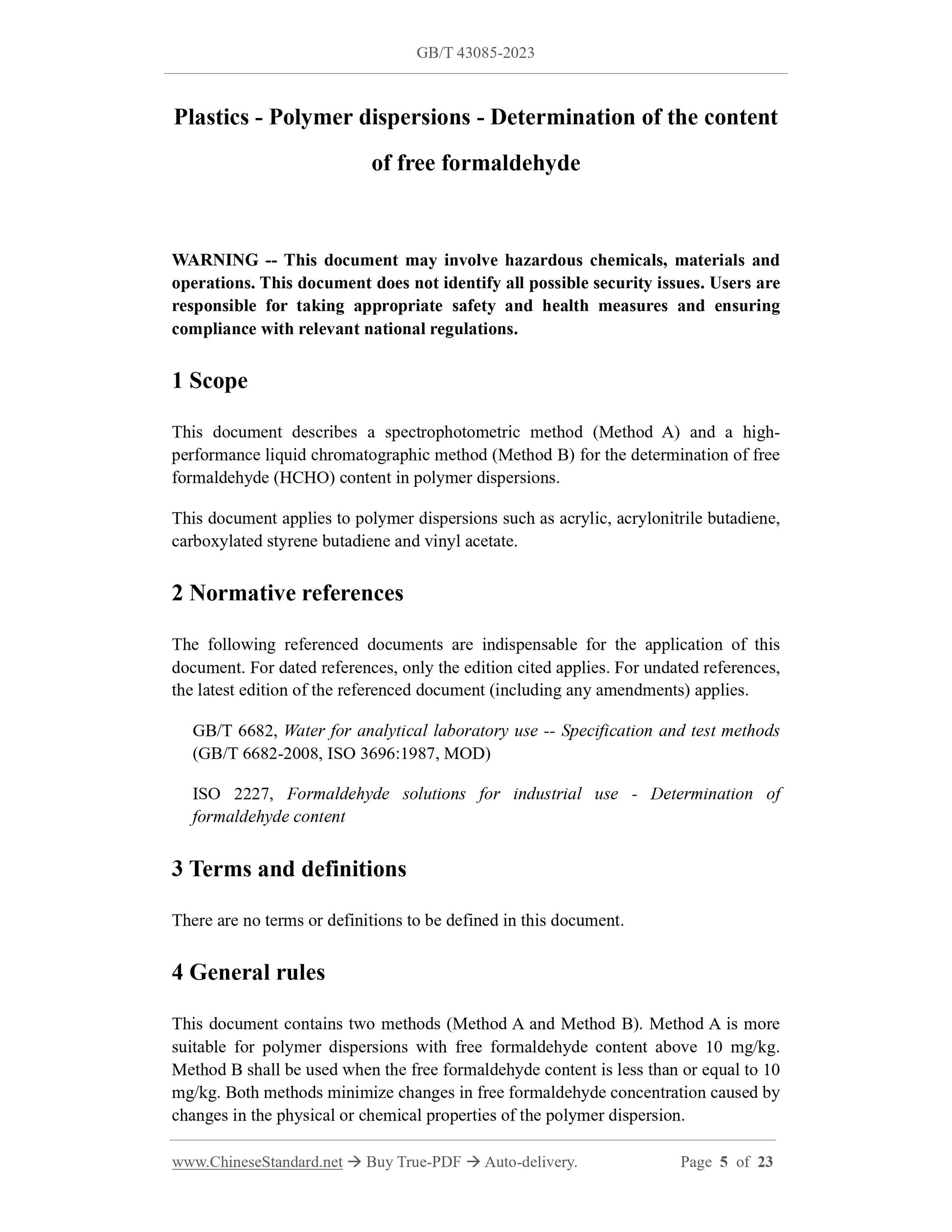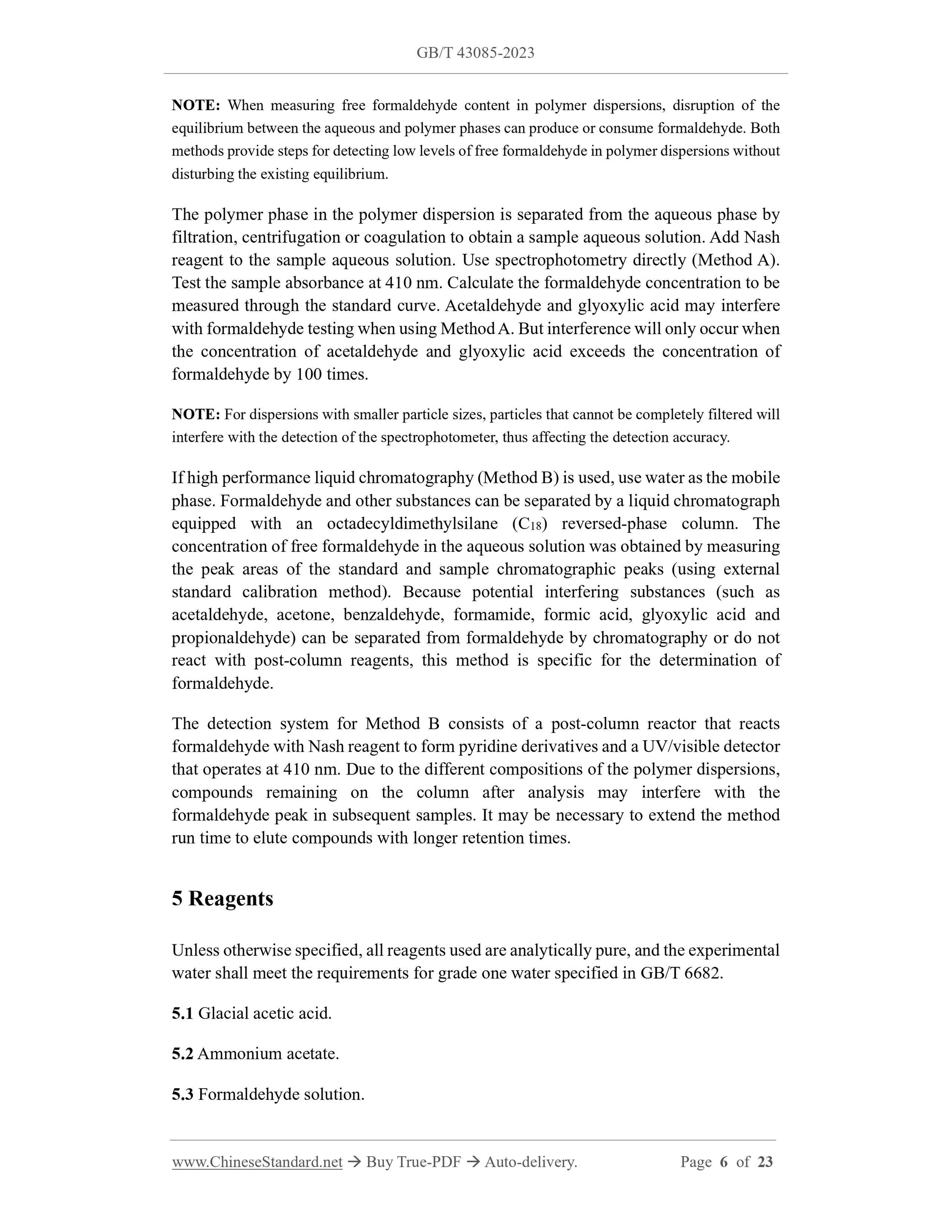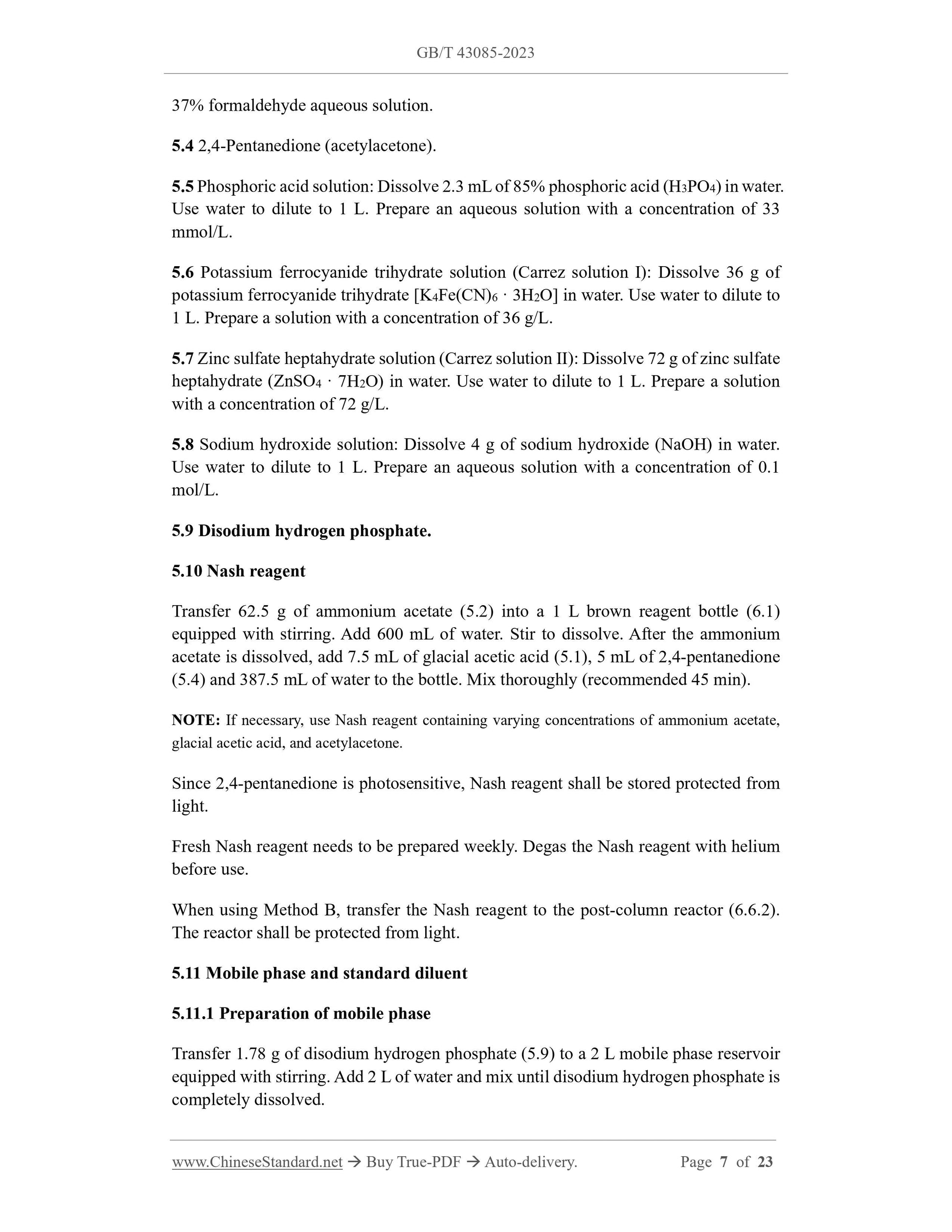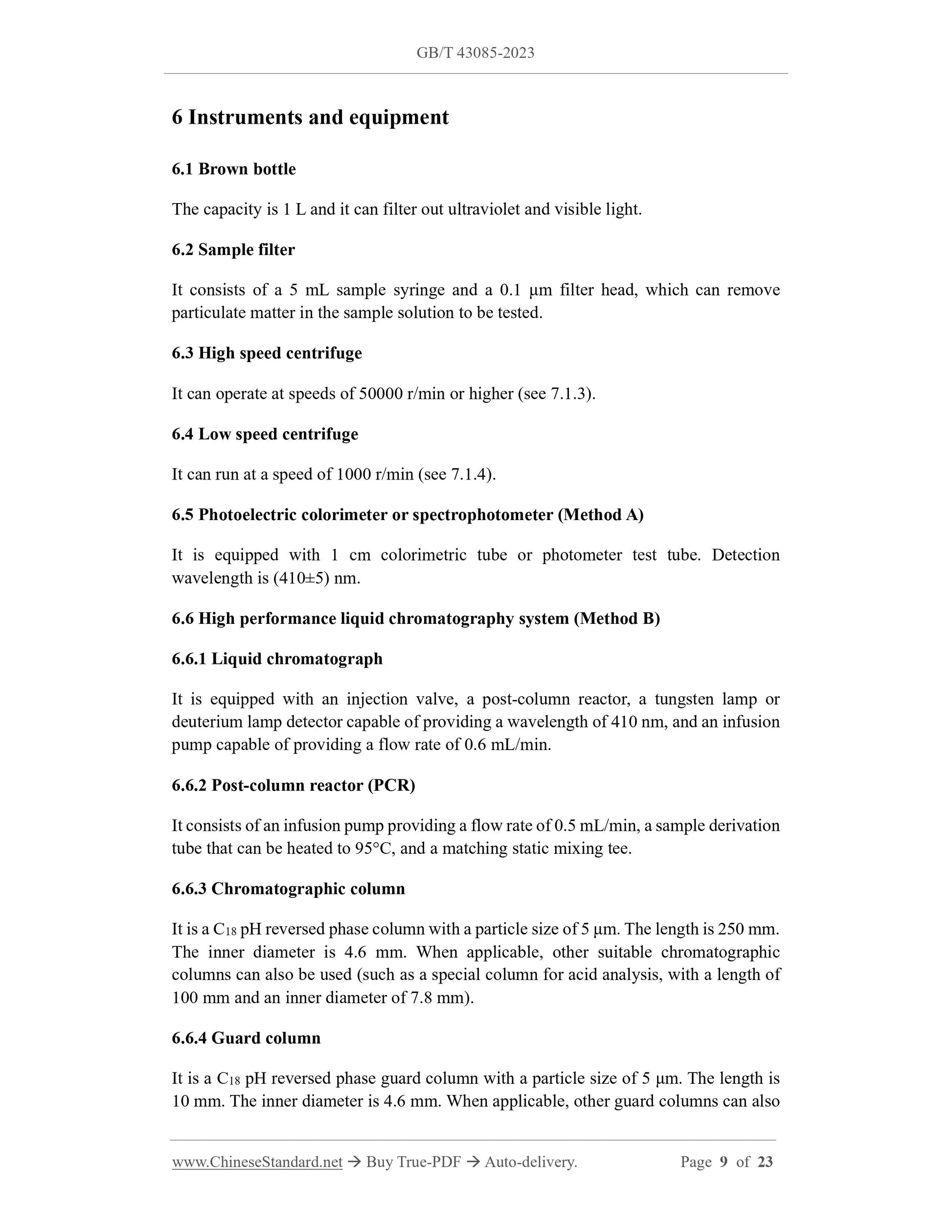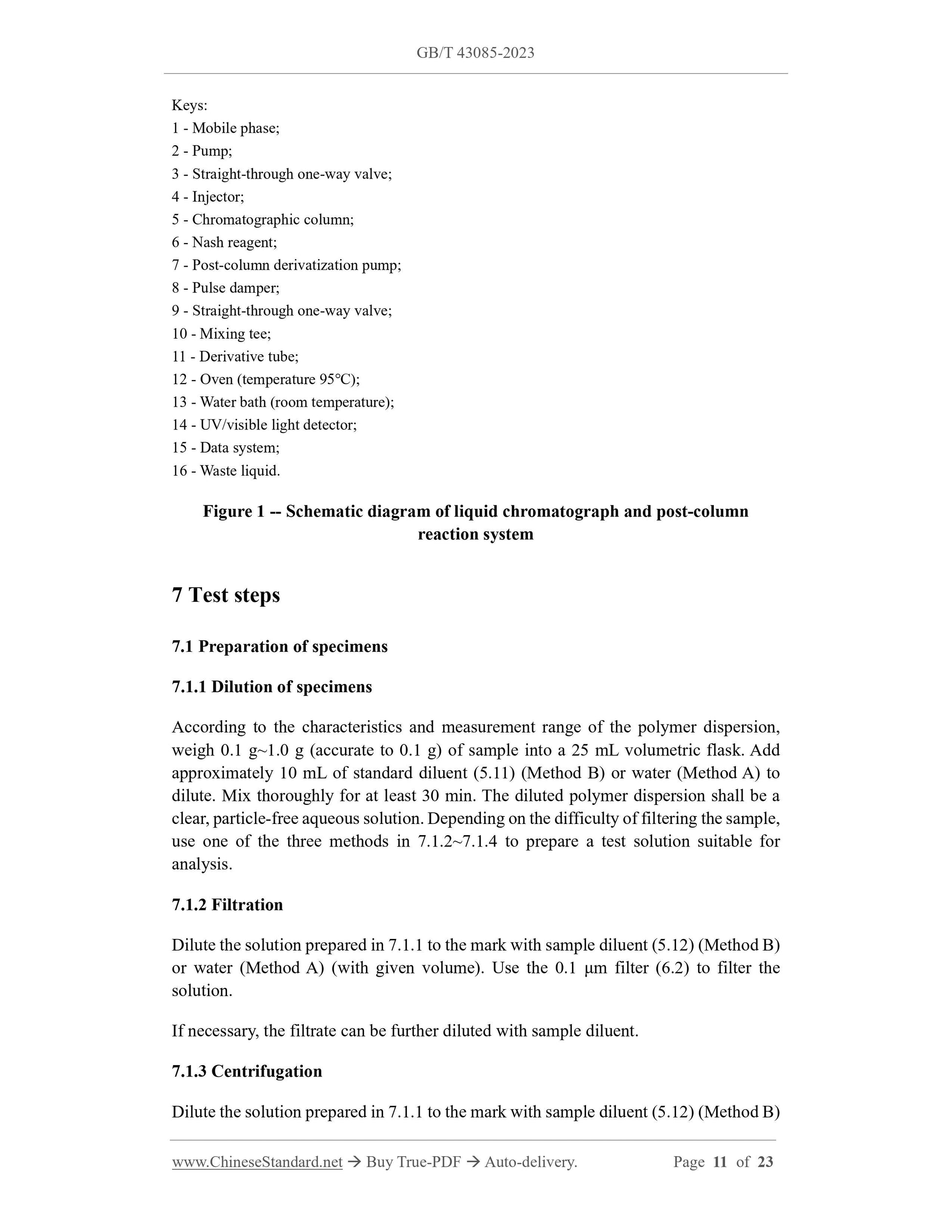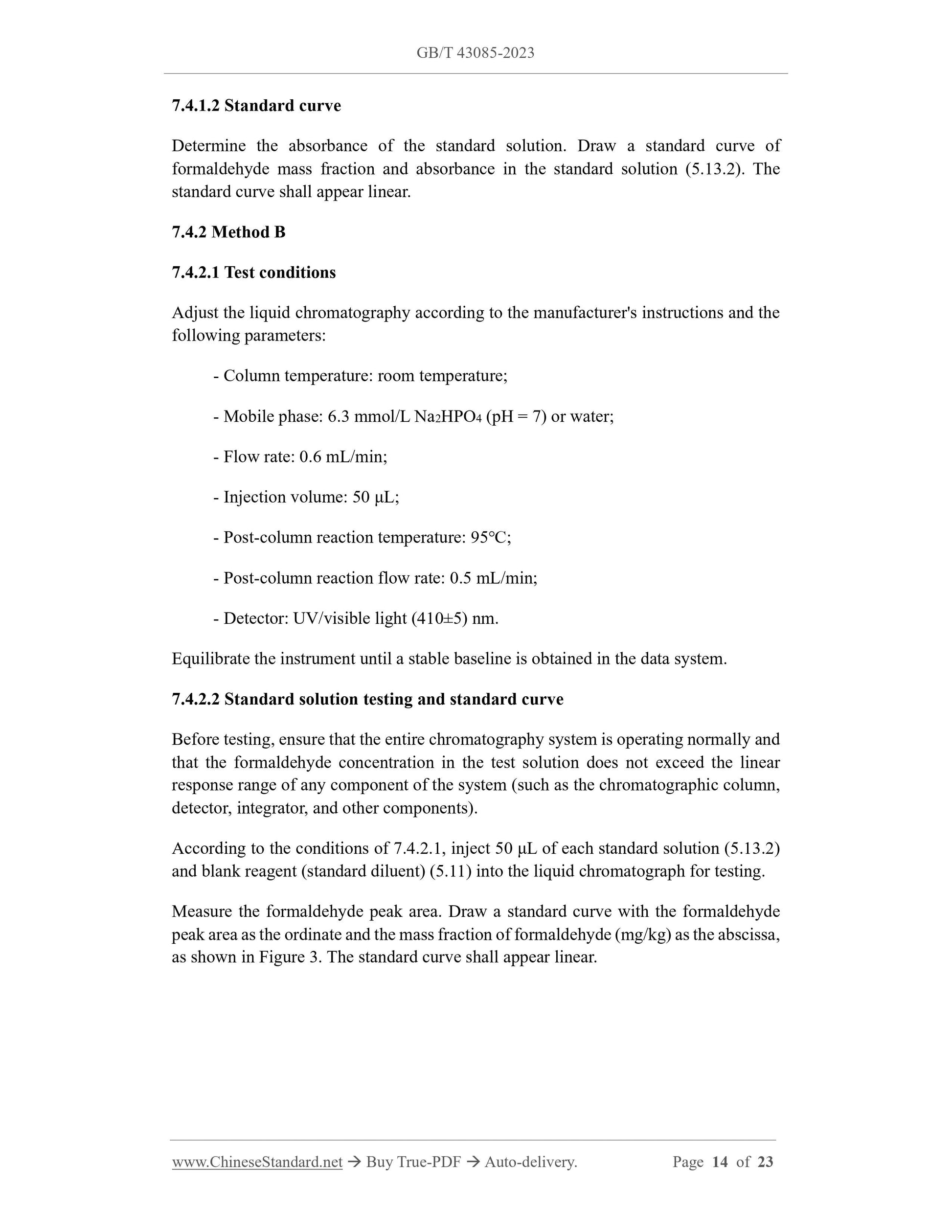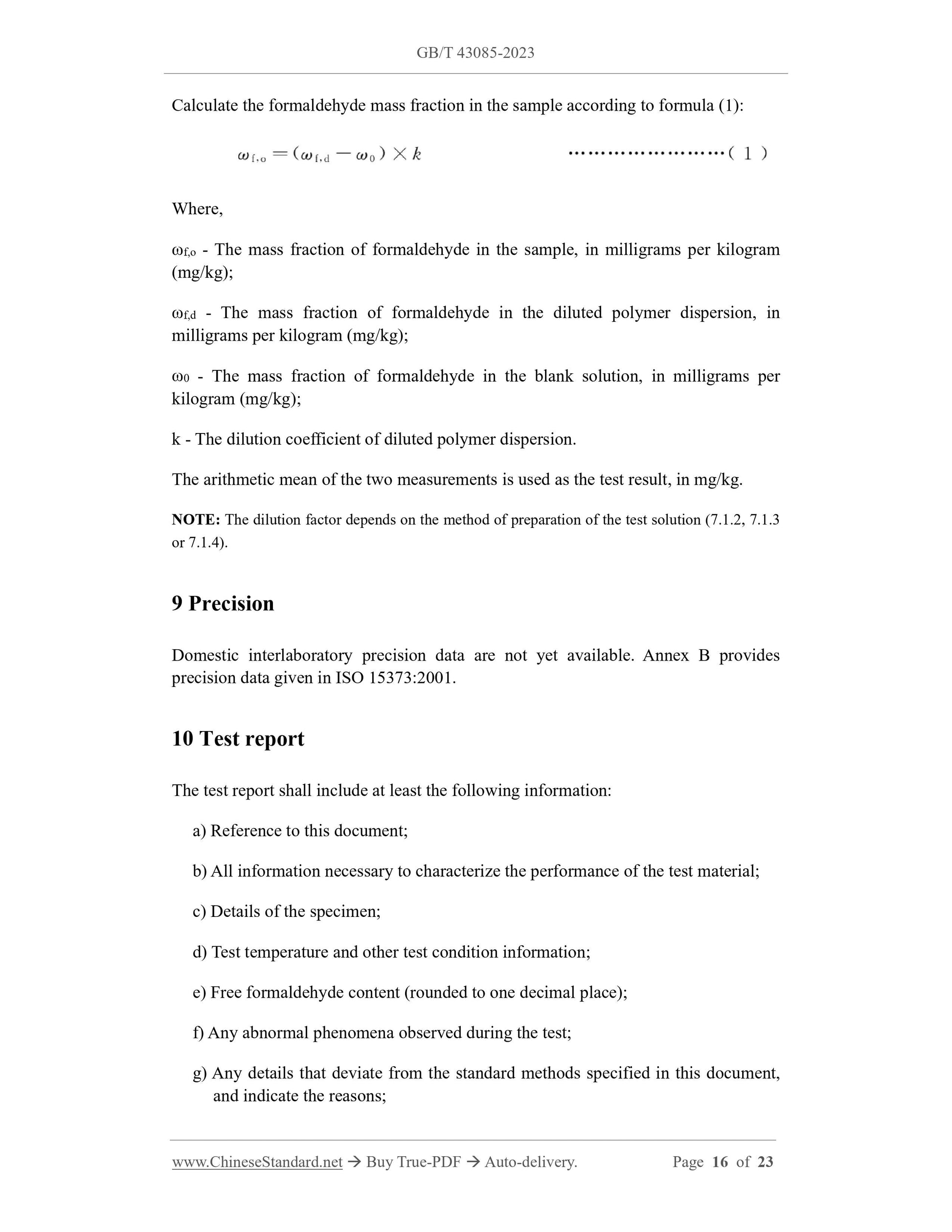1
/
of
9
www.ChineseStandard.us -- Field Test Asia Pte. Ltd.
GB/T 43085-2023 English PDF (GB/T43085-2023)
GB/T 43085-2023 English PDF (GB/T43085-2023)
Regular price
$260.00
Regular price
Sale price
$260.00
Unit price
/
per
Shipping calculated at checkout.
Couldn't load pickup availability
GB/T 43085-2023: Plastics - Polymer dispersions - Determination of the content of free formaldehyde
Delivery: 9 seconds. Download (and Email) true-PDF + Invoice.Get Quotation: Click GB/T 43085-2023 (Self-service in 1-minute)
Newer / historical versions: GB/T 43085-2023
Preview True-PDF
Scope
This document describes a spectrophotometric method (Method A) and a high-performance liquid chromatographic method (Method B) for the determination of free
formaldehyde (HCHO) content in polymer dispersions.
This document applies to polymer dispersions such as acrylic, acrylonitrile butadiene,
carboxylated styrene butadiene and vinyl acetate.
Basic Data
| Standard ID | GB/T 43085-2023 (GB/T43085-2023) |
| Description (Translated English) | Plastics - Polymer dispersions - Determination of the content of free formaldehyde |
| Sector / Industry | National Standard (Recommended) |
| Classification of Chinese Standard | G31 |
| Classification of International Standard | 83.080.01 |
| Word Count Estimation | 18,144 |
| Date of Issue | 2023-09-07 |
| Date of Implementation | 2024-04-01 |
| Issuing agency(ies) | State Administration for Market Regulation, China National Standardization Administration |
Share
